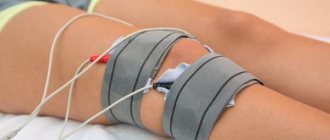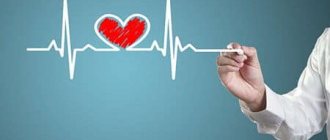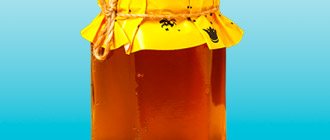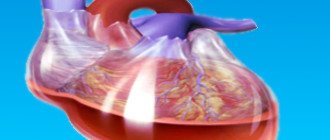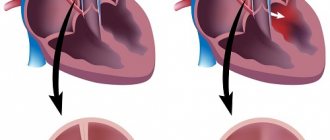The heart is one of the most important human organs. Thanks to its stable and proper functioning, other organs are saturated with oxygen and nutrients. Supporting the vital functions of the body is possible only if the compressor capacity of the heart muscle is normal. This especially applies to people involved in sports, both professional and amateur. Even if you go to the gym and your workouts are far from exhausting, you should know your level of maximum load or the so-called effective heart load index.
How does the heart work normally?
How does exercise affect the heart?
Is it possible for heart damage due to exercise?
How to avoid heart problems?
What is the effective heart load index (VIDEO)
What are the contraindications to physical activity?
How does the heart work normally?
The organ is a large muscle that constantly contracts. Even a 5-6 minute stop in its work leads to irreversible changes in the life of the entire organism. Cardiologists and sports medicine specialists recommend paying attention to the heart rate (HR) or pulse during exercise. If the heart rate exceeds the norm, then the load is considered excessive; if it is less than the norm, then it is insufficient. There are also physiological characteristics of the body that can affect changes in heart rate.
Using the Haskell-Fox formula, you can calculate the normal heart rate during physical activity: 220 minus the number of full years. It is important to remember that the correct functioning of the heart muscle and the normal heart rate will vary from different types of loads and from the fitness of the body. In this case, only a specialist - a cardiologist - can help you.
There are 2 types of load: volume and resistance.
With the first type of load, the heart stretches due to increased blood flow. Under the influence of regular cardio training, the stretching is maintained and increases in volume. Stroke and minute blood volumes become larger, more blood is released per contraction and heart rate decreases. Therefore, athletes' heart rate is normally lower than that of people without an active lifestyle.
In the second type, the load involves pumping blood through effort. In people without frequent physical activity at a high heart rate (180 and above), the heart muscle has to work through resistance; its chambers do not have time to push out blood and fill up, contracting too often.
Also, in overweight people, the heart has to pump blood through excess fat. At the same time, it increases due to hypertrophy (thickening of the fibers of the heart muscle), the volumes of the cavities do not change.
Preventing chest pain
Before starting training, it is recommended to find out your level of physical fitness.
Suitable for this purpose:
- endurance test using squats;
- Ruffier index;
- shoulder muscle strength and endurance test;
- Robinson index;
- reactions of the autonomic nervous system to increased physical activity.
Based on the test results, a training program is selected. If chest pain appears during or after exercise, you need to identify the trigger. This provocateur is excluded (for example, the degree of stress is reduced).
How does exercise affect the heart?
With any type of training intensity, the muscles begin to work, during which their need for oxygen increases, the heart muscle begins to contract more often in order to fill this need. When the heart works intensively, blood pressure (BP) increases, and the body has to launch the hypotensive system, which is responsible for reducing it.
To obtain energy to carry oxygen, the body first burns carbohydrates. After a 15-20 minute workout, it begins to burn fat. The hormonal system of the adrenal glands and thyroid gland also begins to work, and the composition of the blood improves. Due to the work of the muscles that compress the vessels, pushing out blood, then relax filling the vessels with blood, the load on the heart is reduced. Therefore, even a little physical activity is beneficial for people even with severe heart disease.
How to prevent heart pain in athletes:
- be examined by a cardiologist;
- to refuse from bad habits;
- eat well, get enough sleep;
- maintain a drinking regime (35–50 ml of water/1 kg of body weight);
- warm up before training;
- After exercise, do a cool-down appropriate for the sport;
- start with minimal loads at low intensity;
- gradually gradually increase the complexity of the program.
If the examination reveals a disease that forces you to limit sports activity, we recommend classes with a physical therapy specialist who will select an individual set of exercises and determine the intensity and degree of physical activity.
Is it possible for heart damage due to exercise?
Any physical activity, and especially stress on the heart, should be done wisely. If after training you experience pain in the chest area or a change in rhythm, you should consult your doctor. A specialist will help you figure out the right way to strengthen your heart muscle. Any activity is stressful for an unprepared body, and if you do not know your level of permissible effective load on the heart, you can get serious consequences:
- pain in the heart area;
- arrhythmia;
- cardiac hypertrophy;
- bradycardia;
- hypotension;
- exacerbation of existing diseases;
- myocardial infarction.
conclusions
Regular sports and bodybuilding with the correct use of dietary supplements and medications do not pose a danger to the functional state of the heart. However, due to the individual characteristics of a person, the presence of concomitant diseases and non-compliance with exercise techniques, there is a risk of aching, stabbing and burning pain in the chest.
Athletes who experience heart pain after exercise are advised to stop exercising and consult a doctor for help. Doctors, in turn, use a comprehensive approach to diagnosing the underlying cause of pain so that treatment advice is most appropriate.
How to avoid heart problems?
Modern man is accustomed to solving problems as they arise. But it is important to remember that preventing diseases is easier than treating them. A cardiologist is responsible for the normal functioning of the heart muscle and helps to identify malfunctions in its functioning in a timely manner. Preventive consultations are necessary even for healthy people. The doctor can tell you what tests need to be done in your case:
- blood test from the group of cardiac risk indicators (AST, ALT, C-reactive protein, cholesterol, triglycerides)
- ECG
- EchoCG
- blood pressure monitoring
- Holter ECG monitoring (daily or during training)
The most important thing for maintaining heart health is timely medical care or timely preventive measures. In this case, private medicine has the opportunity to provide clients with a flexible schedule at a time convenient for them, without queues and stress. The presence of modern equipment and highly qualified doctors, which is also important for maintaining health and for the correct treatment of already known diseases.
Pathological athlete's heart
In the United States, they keep a special register where the death of an athlete is celebrated every third day, and mostly football players die - a kind of American football is “densely implicated” in rugby. We do not have such records, but all death cases are widely covered by the press; Russian athletes clearly die much less often. The cause of their death is, as a rule, a pathological sports heart, which is formed by unsystematic extreme loads, doping, training against the background of banal infections and, of course, genetic characteristics.
The mass and thickness of the walls of the heart in this situation are also greater than normal, but due to the lag in the growth of coronary capillaries from the increase in the myocardium itself, its nutrition is disrupted. The muscle is less elastic, so contractility suffers and, therefore, maximum relaxation at rest is impossible. The volume of not only the ventricles that eject blood increases, but also the volume of the atria that receive blood. The volume of the heart is increased, but much more than it should be - more than 1200 cubic centimeters.
Also, the heart rarely contracts, bradycardia occurs. It can be more pronounced, that is, less than 40 contractions per minute, especially at night, which leads to severe oxygen starvation of the brain. With a normal athletic heart, the athlete does not feel a slow heartbeat in any way; when bradycardia is accompanied by clinical symptoms, then this is no longer a normal adaptation of the heart to high loads, but a pathological condition. Decrease in blood pressure below 100/60 mmHg. in such a situation, it is also not an adaptation of the body, but a reaction to painful changes.
Angina pectoris
Angina pectoris is one of the most common forms of coronary heart disease (CHD). The disease manifests itself as pain in the chest (in the middle of the chest) when walking (especially in cold or windy weather), climbing stairs, as well as other physical and emotional stress, against a background of increased blood pressure. The pain is compressive in nature (that’s why angina pectoris was previously called “angina pectoris”), pressing or burning, radiating to the left arm or both arms, or to the lower jaw. The pain is often accompanied by shortness of breath, sweating, and weakness. When you stop or stop exercising, the pain behind the sternum quickly (in 3-5 minutes) goes away.
For stable angina pectoris, the repetition of pain in the chest during the same physical activity is typical; the pain is of the same nature and quickly disappears when the exercise is stopped or nitroglycerin is taken under the tongue. Often, patients know that an attack occurs precisely when going outside in cold weather, accelerating their pace, climbing a mountain, and they can even say exactly when walking what distance (for example, after 100-200 meters) the pain appears.
If pain behind the sternum occurs more often, becomes more intense, prolonged (lasting more than 10-15 minutes), provoked by less stress and occurs even at rest (including at night), their character changes (especially if the pain becomes burning or tearing, sensation “cola behind the sternum”) and are no longer quickly relieved by nitroglycerin, then these are symptoms of unstable angina. When an attack of angina pectoris lasts more than 20-30 minutes, the death of myocardial cells begins, that is, myocardial infarction is likely. In the acute period of myocardial infarction, there is a high risk of life-threatening complications (ventricular fibrillation, i.e. cardiac arrest, heart block, heart rupture). Therefore, if the chest pain cannot be relieved within 15-20 minutes, then you should immediately call an ambulance, which will take you to a specially equipped cardiac intensive care unit, where observation and treatment will reduce the likelihood of myocardial infarction and its complications.
Why does chest pain occur?
To understand what coronary heart disease is and angina pectoris as the most common form of this disease, you need to remember your school biology textbook. In a simplified form, the development of this disease can be represented as follows.
If you remember, all living organisms, unlike inanimate nature, move. The organisms themselves, their body parts, stomach and intestines move, blood moves through the vessels. Movement requires energy. Energy in cells is produced through oxidation (this complex process can be very loosely called “internal combustion”). Oxidation requires oxygen. The simplest organisms (amoebas, bacteria, etc.) receive oxygen directly through the cell membrane. In complex organisms, there is a delivery system: in the lungs, oxygen is absorbed into the blood and distributed through the vessels to all organs and tissues. The vessels through which oxygenated blood flows are called arteries. Accordingly, there are arteries in all organs. The arteries that supply blood to the heart are called coronary or coronary arteries (by the way, this is why coronary heart disease is also called coronary heart disease (CHD) in English transcription). Normally, the lumen of the artery is sufficient to ensure the flow of the required amount of blood through it to the part of the heart to which it supplies blood. In addition, when the demand for oxygen increases (for example, when running), due to the elasticity of the wall, a healthy coronary artery can expand (this is called coronary reserve). With atherosclerosis (and ischemic heart disease is a type of this process) under The lining of the coronary arteries deposits cholesterol in the form of plaques. As a result, the lumen of the arteries in these areas narrows (just as the lumen of water pipes narrows in areas where rust and scale are deposited). In addition, calcium penetrates into the plaques and these areas are “cemented” and lose elasticity.As a result, the lumen of the coronary arteries narrows and the coronary reserve decreases. This process can last for years and not manifest itself in any way, because the physiological coronary reserve is quite high. But when the lumen of the artery narrows by more than 70-75%, then the oxygen supplied by the blood may not be enough (in medical terms, myocardial ischemia occurs). Naturally, this occurs primarily when the need for oxygen is greater, that is, during physical activity. In typical cases, when you speed up your pace, walk uphill, or go outside in cold weather, pain occurs behind the sternum, which quickly stops when you stop (at rest, there is still enough blood supply through the narrowed section of the artery). Pain behind the sternum is an alarm signal, a “cry of the heart” - “stop, I don’t have enough oxygen,” and therefore “enduring it courageously” is wrong and very dangerous.
How to detect angina pectoris?
If you experience chest pain described above, you should consult a cardiologist, or first, a general practitioner or family doctor. If you are a man over 40 years of age, smoke, suffer from hypertension or diabetes, and your parents had heart attacks or strokes, then it is very likely that chest pain is a symptom of angina pectoris. The disease is serious, so you need to be examined as soon as possible, temporarily postponing daily activities. Remember that if you leave this problem “for later”, hoping for “maybe”, then a myocardial infarction may occur, which often leads to death.
The diagnosis of angina is made based on an analysis of the patient's complaints and examination data. Blood lipid tests and blood coagulation parameters (coagulogram) are performed. An electrocardiogram (ECG) is recorded at rest, which may be normal if there has not been a myocardial infarction. But if you provoke an attack of angina with physical activity (stress test) on a treadmill (treadmill) or bicycle ergometer, then the ECG can reveal signs of transient myocardial ischemia. If the stress test results are positive, coronary angiography (x-ray contrast study of the coronary arteries) is indicated, which can reveal the nature of the damage to the coronary arteries (multiple or single atherosclerotic plaques, stable or not, the severity of stenoses (narrowings), their location and extent. Depending on the symptoms , the cardiologist makes a decision on the possibility of drug treatment of angina or the need for myocardial revascularization surgery - coronary angioplasty (PTCA) or coronary artery bypass grafting (CABG).
What to do if you have an angina attack?
The first thing to do when pain occurs in the chest is to stop exercising. If pain appears while walking, then you need to stop. Stopping the load itself can relieve (stop) the pain. But it is safer to take nitroglycerin under the tongue. I note that modern forms of nitroglycerin in the form of nitrospray in cans (nitromint, nitro-pol, nitrocor-spray, etc.) are more convenient in comparison with also effective tablets. There is no need to open the tube and pour the pills into the palm of your hand, take one of them, pour the rest back (and at this time there is pain in the chest, and if, in addition, the attack occurred on the street, you also need to take off and put on gloves, etc.). Nitrospray, unlike tablets, does not crumble into powder, which means that the dosage of nitroglycerin remains exactly necessary, it is protected from light and remains valid for 3 years. In short, if possible, it is more convenient and reliable to use nitro spray.
So, if there is pain in the chest, you need to:
- Stop and take one dose of nitroglycerin under the tongue (1 spray or one tablet).
- If possible, sit down. Nitroglycerin lowers blood pressure, and if the pressure drops suddenly, you may feel dizzy or even faint. That is why you should not immediately take more than 1 dose of nitroglycerin. But attention! The danger of myocardial infarction when an attack of angina is prolonged is much more serious than these possible side effects of taking nitroglycerin, which, by the way, do not always occur, just like a headache. If you previously had severe headaches while taking nitroglycerin, then to reduce them, also take 1 tablet of Validol or any other tablet containing menthol (Halls, Rondo, Chill, etc.). Attention! Taking validol alone is not reliable compared to taking nitroglycerin and you may lose valuable time to quickly relieve an attack. The same applies to taking nitrosorbide under the tongue; it begins to act only after 7-10 minutes. Nitroglycerin remains the “gold standard” for relieving angina attacks. If, when taking nitroglycerin, severe headaches or dizziness still occur, then you can reduce the single dose to relieve attacks by switching to using “Kremlin drops” or Votchal drops or using an alcohol solution of nitroglycerin (drop 1-2 drops of it onto a validol tablet and during an attack, do not take the entire tablet, but break it into 2-4 parts; however, such a “blank” cannot be stored for more than a few hours due to the rapid destruction of nitroglycerin). As a rule, chest pain is quickly relieved by taking 1 dose of nitroglycerin under the tongue.
- If the pain behind the sternum is not relieved after 3-5 minutes and there is no severe weakness or dizziness, then you need to take another dose of nitrospray or 1 tablet of nitroglycerin under the tongue. If after another 3-5 minutes the pain behind the sternum is still not relieved, then 1 dose (3rd) of nitroglycerin is taken under the tongue again.
- If after 15 minutes the chest pain is not relieved by taking nitroglycerin, then you need to call an ambulance. While waiting for the ambulance, if there is no severe weakness and dizziness, you can take 1 dose of nitroglycerin under the tongue again every 5-10 minutes and put a mustard plaster on the heart area. Considering that in such a situation myocardial infarction is likely, it is also necessary to take? aspirin tablets (250-325 mg).
Treatment of angina
If the diagnosis of angina is confirmed during examination, then treatment of this disease is necessary. The type of treatment depends primarily on whether the situation is stable or unstable. If a diagnosis of unstable angina is made, then hospitalization in a hospital is indicated; treatment of stable angina is usually possible on an outpatient basis. In case of unstable angina or severe stable angina, coronary angiography is indicated and a decision on the need for surgical treatment - myocardial revascularization operations - coronary angioplasty (PTCA) or coronary artery bypass grafting (CABG) is indicated. If possible, they limit themselves to drug treatment.
Objectives of drug treatment
- slowing the progression of atherosclerosis,
- prevention of myocardial infarction,
- reduction in the frequency of chest pain.
Unfortunately, it is impossible to completely cure atherosclerosis and ischemic heart disease (do not believe charlatans who advertise all sorts of remedies that have not been scientifically tested!), but the prognosis and quality of life can be significantly improved.
In principle, treatment of angina pectoris includes:
- Correction of risk factors for coronary artery disease. A direct connection between smoking, arterial hypertension, hyperlipidemia, and diabetes mellitus and morbidity and mortality from ischemic heart disease has been proven. It is necessary to eliminate or reduce the impact of these factors.
- Treatment of atherosclerosis. IHD is one of the forms of atherosclerosis, so strict adherence to the diet and constant lifelong use of statins (Zocor, Simgal, Liprimar, Lipostat, etc.) are necessary.
- Prevention of blood clot formation on atherosclerotic plaques. If the atherosclerotic plaque is “soft”, with a thin cover, then it can burst and a blood clot forms on it. A thrombus can block blood flow through the coronary artery and then myocardial infarction occurs (see section “Myocardial infarction”). To prevent the formation of a blood clot on an unstable plaque, all patients suffering from angina pectoris are prescribed antiplatelet drugs - aspirin (its enteric form is called thromboASS) or Plavix.
- Optimizing the working conditions of the heart. If we compare our body to a cart that rides along the road, and our heart to a horse that pulls it, then it will become clear why certain drugs are prescribed. Beta blockers (atenolol, metoprolol, concor, etc.) slow down the heart and lower blood pressure. As a result, we spare the horse (heart) so as not to drive it, and the cart travels longer. Antihypertensive drugs (calcium antagonists (nifedipine-retard, norvasc, plendil, diltiazem), ACE inhibitors (enalapril, prestarium, monopril, etc.), diuretics (indapamide (arifon), hypothiazide), etc.) reduce blood pressure if it is elevated , reducing the obstacle to the ejection of blood from the heart (improving the road along which the cart travels). Cytoprotectors (preductal) improve metabolism in the myocardium (comparable to lubrication of the axles of cart wheels). As a result, the use of drugs reduces the load on the heart, which reduces its need for oxygen and reduces the likelihood of angina attacks.
- Prevention of angina attacks. For this purpose, the beta-blockers already mentioned above are used, as well as calcium antagonists (they also dilate the coronary arteries) and long-acting nitrates (cardiquet-retard, monocinque, monomac, nitrosorbide, etc.). Nitrates are used in the minimum required doses, as needed, depending on what time of day angina attacks occur and what provokes them. So, if chest pain occurs only in the first half of the day when going outside, then Cardiquet-Retard is taken only once a day in the morning 20-30 minutes before the expected exercise. If, against the background of a selected adequate dose of beta-blockers and calcium antagonists, there is no chest pain, then taking nitrates is not indicated.
Such different hypertrophies
The manifestations of a healthy sports heart and a pathological one are similar, but healthy cardiac hyperfunction is intermittent, characterized by a decrease during the period outside training and competition, while pathological hyperfunction is constant and becomes irreversible over time. The pathological heart is always at work because it must always overcome its hidden weakness. All this is referred to as a violation of the heart’s adaptation to stress - maladaptation, which can lead to sudden death.
The athlete does not feel the transition from a physiological sports heart to a pathological one, he simply becomes less efficient, gets tired easily and hardly recovers during rest, and attacks of dizziness are possible during training. During the examination, thickening of the heart muscle is revealed with insufficient relaxation in the diastole phase, this already indicates a disease - initial asymptomatic cardiomyopathy.
Not only the contractile function suffers, but also the formation of electrical potential for the implementation of contractions - rhythm is disrupted. Heart rhythm disturbances are manifested by untimely beats, irregular pulses, or simply loss of consciousness. When you rest from training, rhythm disturbances disappear, but changes in the heart muscle remain. Gradually, the heart muscle is replaced by scars, turning the ventricles of the heart into weakly contractible scar sacs, which “drive” blood with great difficulty, and heart failure progresses.
Myocardial hypertrophy, as a heart disease, and pathological athlete's heart have similarities, but in heart disease, hypertrophy is needed to compensate for an anatomical or functional defect, for example, valvular disease. With an athletic heart, hypertrophy is necessary for the implementation of muscle efforts, that is, it does not have an underlying defect. However, with any pathological hypertrophy, cellular metabolism is first disrupted, then the structure of the myocardium changes with the formation of scars, and finally, cardiac function suffers.



